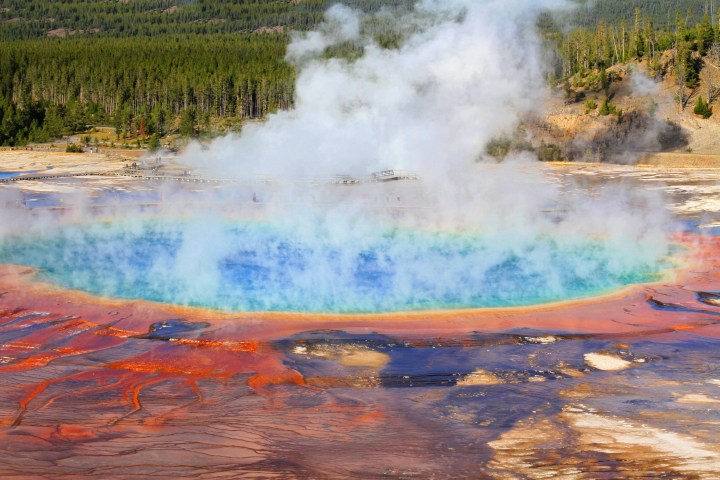
A study by the Jet Propulsion Laboratory concluded that the Yellowstone supervolcano, a massive pool of magma beneath the national park, is a much graver existential threat to life on this planet than any potential large-scale asteroid impact event. There are 20 known supervolcanoes on Earth with a major eruption occurring every 100,000 years or so. Here’s the bad news: An eruption of the Yellowstone supervolcano could bury the bulk of the United States under tons of ash and lava, change the climate of the Earth for centuries, and potentially kill millions in the process.
It is believed that the Yellowstone supervolcano erupts every 700,000 years, and the last eruption occurred 640,000 years ago. This means the Yellowstone caldera — brimming with enough molten rock to fill the Grand Canyon more than 14 times — is nearly due. Fortunately, supervolcanoes only erupt once the molten rock is heated enough to become “highly fluid.” So how does one go about preventing this from happening? The answer, according to NASA, might be to cool down the molten rock before it gets too hot.
NASA estimates that a Yellowstone supervolcano would need to be cooled by roughly 35 percent to prevent an eruption. To achieve this, the agency proposes boring a series of holes to cool the subsurface magma chamber. The team posits drilling a 10 kilometer deep hole to tap into the hydrothermal water beneath and adjacent to the magma chamber. This heated water could then be cooled by pumping in cooler water, thereby reducing the overall temperature.
However, there are inherent risks to this approach. If the hole is drilled too deep, for example, the whole process could cause a depressurization that may inadvertently trigger an eruption — making a supervolcanic event an ironic side-effect of our preventative approach to said supevolcano.
It is estimated that such a massive undertaking would cost more than $3.5 billion. Although NASA does envision a return on investment other than annihilation prevention aspect. The team of researchers believe this heated pool of water and could be harnessed as a viable source of clean geothermal energy. This theoretical geothermal generator would utilize steam from the superheater power to turn a series of power turbines.
So in a nutshell, if this crazy plan doesn’t work, we’re dead — but if it does work, not only would it prevent the U.S. from descending into a post-apocalyptic nightmare that probably looks a lot like The Road; people in Wyoming might also end up with cheaper monthly electric bills. I know which one I’d prefer.


